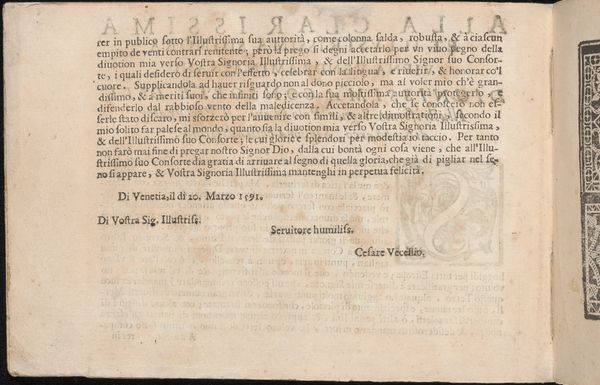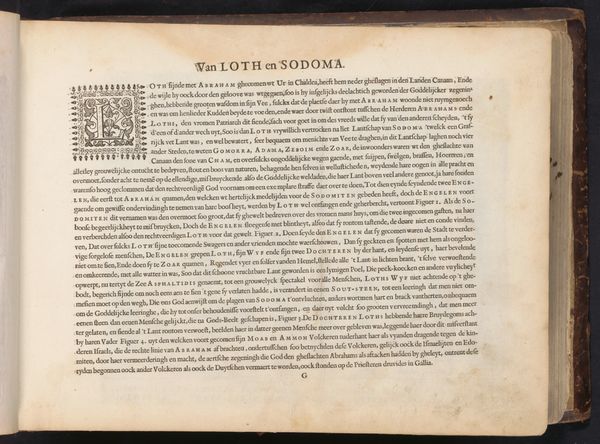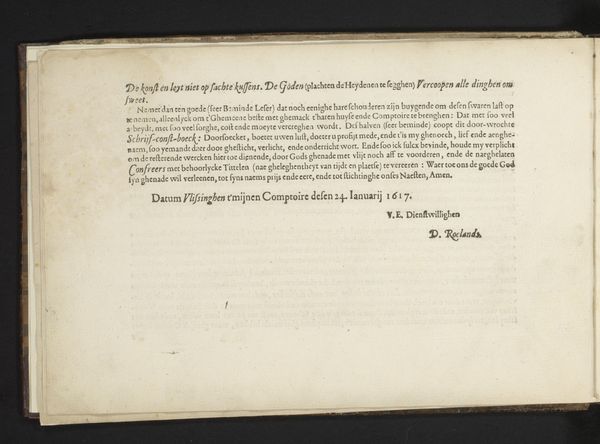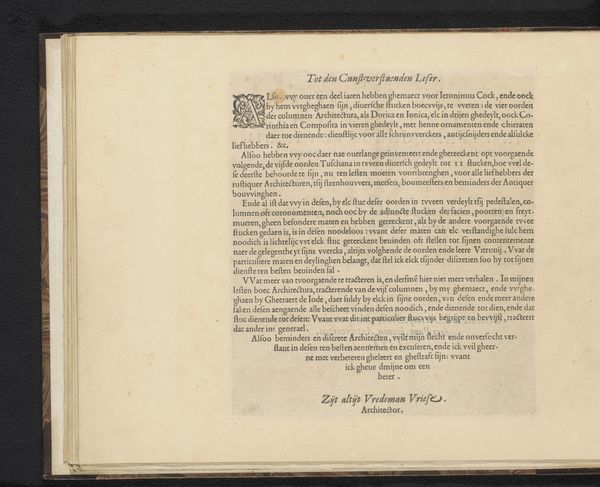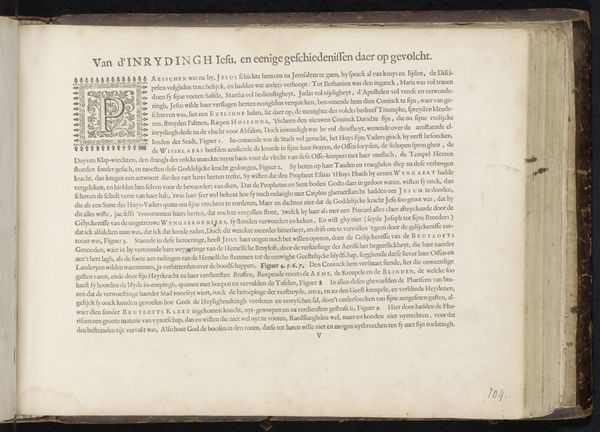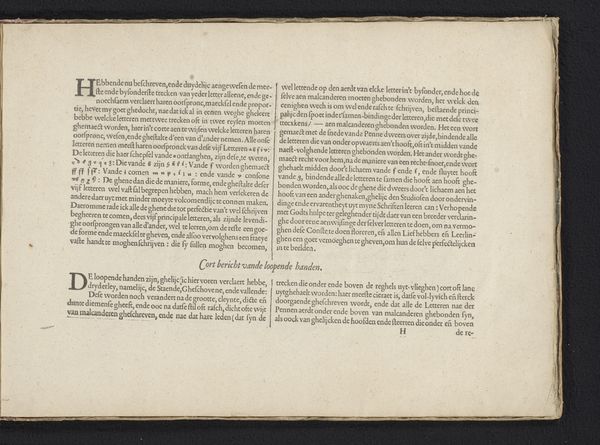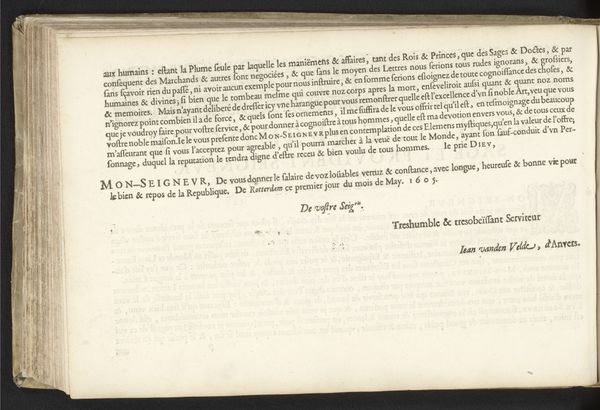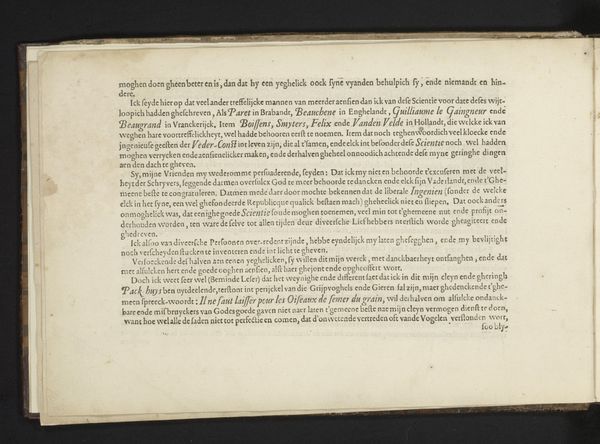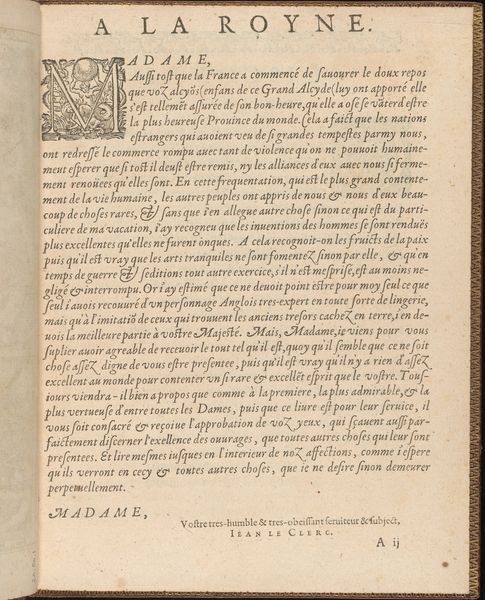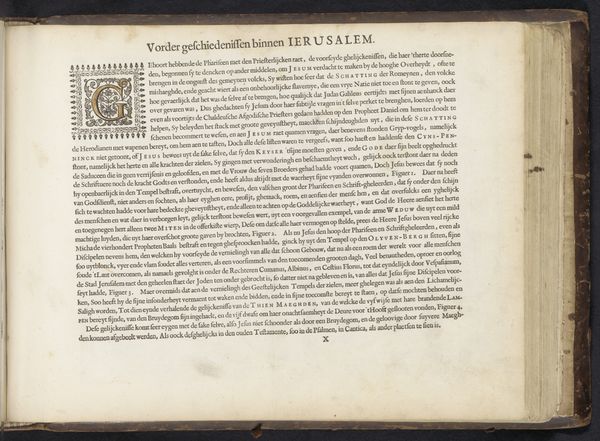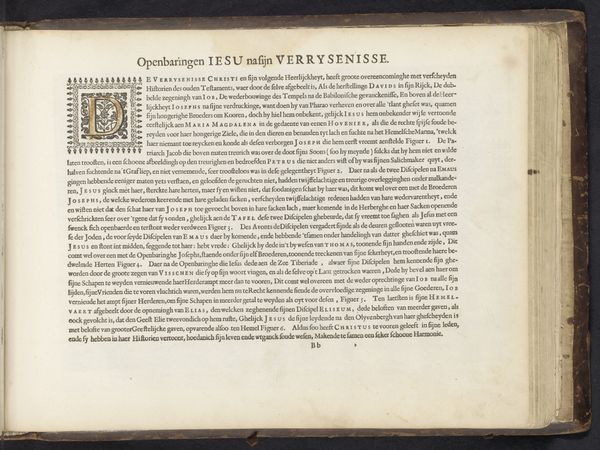
graphic-art, print, paper, typography, woodcut, engraving
#
graphic-art
# print
#
paper
#
text
#
typography
#
woodcut
#
northern-renaissance
#
engraving
Dimensions: height 265 mm, width 360 mm
Copyright: Rijks Museum: Open Domain
This is the title page to Abraham de Bruyn’s book of costume prints, made in Antwerp in 1581. It’s an etching, a printmaking process that involves biting into a metal plate with acid to create an image. Consider how this technique allows for fine, detailed lines, perfect for rendering the fashionable garments of the time. Etchings like this were a key means of circulating visual information in early modern Europe, especially regarding status and social standing. The ability to reproduce images efficiently made them accessible to a wider audience, influencing fashion trends and social perceptions. De Bruyn's work reflects the era's burgeoning interest in global cultures and the rise of mercantile capitalism. While purporting to document diverse customs, these images also served the interests of trade and colonial expansion, feeding into a European worldview eager to categorize and consume the world. The significance of this seemingly simple print lies in its material presence, the process of its making, and the historical moment it represents. It bridges the gap between art, craft, and social history.
Comments
No comments
Be the first to comment and join the conversation on the ultimate creative platform.
